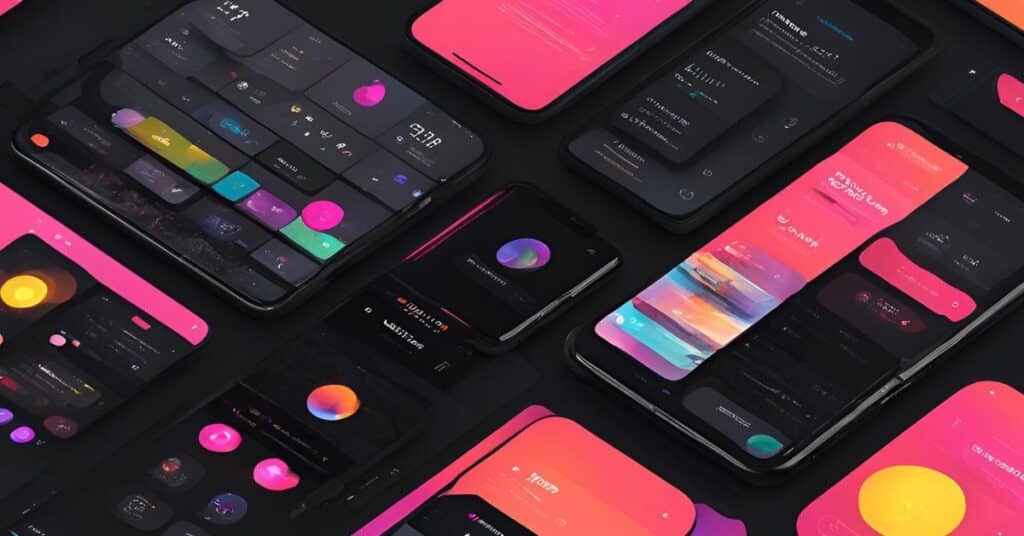
In today’s fast-paced digital world, user engagement is key to the success of any online platform. With users constantly bombarded by information and choices, a minimalist approach to UI (User Interface) design has become a powerful tool for improving engagement. By simplifying interfaces and focusing on essential elements, minimalism creates a seamless, enjoyable user experience that keeps users coming back.
What is Minimalist UI Design?
Minimalist UI design eliminates unnecessary elements and streamlines the user interface to its core essentials. It prioritizes clarity, functionality, and usability while reducing clutter and distractions. The goal is to guide users toward their desired actions without overwhelming them with options or visual noise.
Key principles of minimalist UI design include:
- Simplicity: Keeping the design clean and straightforward.
- Whitespace: Using space to enhance readability and focus.
- Intentional Design: Ensuring every element serves a purpose.
- Consistency: Maintaining uniformity in colours, fonts, and elements.
Why Minimalism Enhances User Engagement
Minimalism is not just an aesthetic choice; it directly impacts user behavior. Here’s how it enhances user engagement:
1. Reduces Cognitive Load
When users encounter a cluttered interface, they must process more information, leading to cognitive overload. Minimalist UI reduces the number of choices and distractions, making it easier for users to navigate and interact with the platform.
Example: The Google homepage is a classic example of minimalist UI. The page features only the search bar, Google logo, and a few essential links, making it easy for users to focus on the primary function: searching.
2. Improves Usability
A simplified interface ensures that users can quickly find what they’re looking for. By focusing on core functionalities and essential content, minimalist designs improve usability and reduce frustration.
Example: Dropbox’s website uses a minimalist design that highlights key features and a call-to-action (CTA) button. The clean layout helps users immediately understand the service and take action.
3. Enhances Visual Hierarchy
Minimalist UI leverages visual hierarchy to guide users’ attention to important elements. By using size, color, and placement strategically, designers can direct users to key actions, increasing conversions and engagement.
Example: Spotify’s app interface focuses on large album artwork and clear navigation options, ensuring that users can easily find their favorite music and playlists.
4. Increases Accessibility
A clean, clutter-free interface is more accessible to users with disabilities. Minimalist designs improve readability, reduce distractions, and make navigation more intuitive, ensuring an inclusive user experience.
Example: Apple’s website showcases its products using large images, clear typography, and minimal text, making it easy for users to browse on any device.
5. Boosts Performance
Minimalist UI designs tend to be lighter and faster, leading to better performance across devices. Faster loading times and smoother interactions contribute to a positive user experience, encouraging users to stay longer and engage more.
Example: Medium’s blogging platform uses a minimalist interface that highlights content without unnecessary distractions. The simple layout makes it easy for readers to focus on the articles.
How to Implement Minimalist UI Design
To create an effective minimalist UI, follow these best practices:
1. Focus on Content First
Prioritize the content that users need the most. Remove any elements that do not add value to the user’s journey. Use whitespace to separate sections and improve readability.
2. Use a Limited Color Palette
Stick to a cohesive color scheme that enhances the brand identity and user experience. Avoid using too many colors, as it can create visual noise.
3. Simplify Navigation
Keep navigation menus straightforward and intuitive. Limit the number of menu items and group related content logically.
4. Optimize for Mobile
Ensure your minimalist design works seamlessly on mobile devices. A responsive design is essential for providing a consistent user experience across different screen sizes.
5. Test and Iterate
Conduct user testing to identify pain points and areas for improvement. Continuously refine the UI to ensure it remains effective and engaging.
Examples of Successful Minimalist UI Designs
Many well-known brands have embraced minimalist UI design to enhance user engagement:
- Apple: Known for its clean, intuitive interfaces that prioritize user experience.
- Google: The minimalist design of Google’s homepage is iconic, focusing on the search bar and reducing distractions.
- Airbnb: The platform uses a clean, modern design with a focus on high-quality images and straightforward navigation.
- Medium: A blogging platform that uses a minimalist interface to highlight content and improve readability.
- Spotify: The app’s minimalist UI ensures users can easily navigate and find their favorite music.
The Future of Minimalist UI Design
As technology evolves, minimalist UI design will continue to play a crucial role in creating engaging digital experiences. With the rise of AI and voice interfaces, the focus will shift even more toward simplicity and efficiency.
Incorporating minimalist principles into UI design is not about stripping away features but about delivering a focused, user-centric experience. By prioritizing simplicity, usability, and accessibility, businesses can create digital products that resonate with users and drive long-term engagement.
Are you ready to simplify your digital experience? Let’s collaborate to create minimalist designs that captivate and engage your users. Contact us today to start your journey toward better user engagement!


